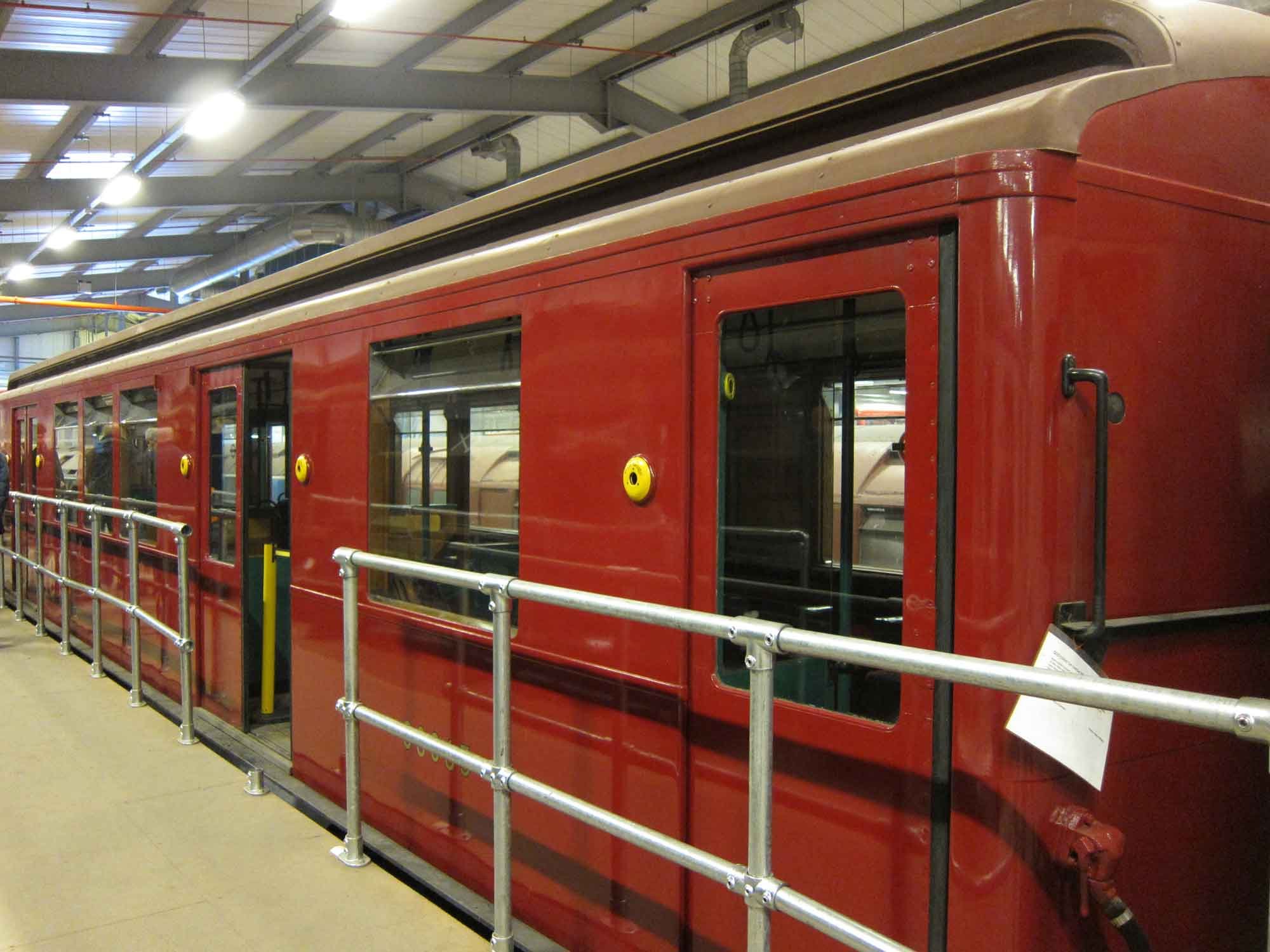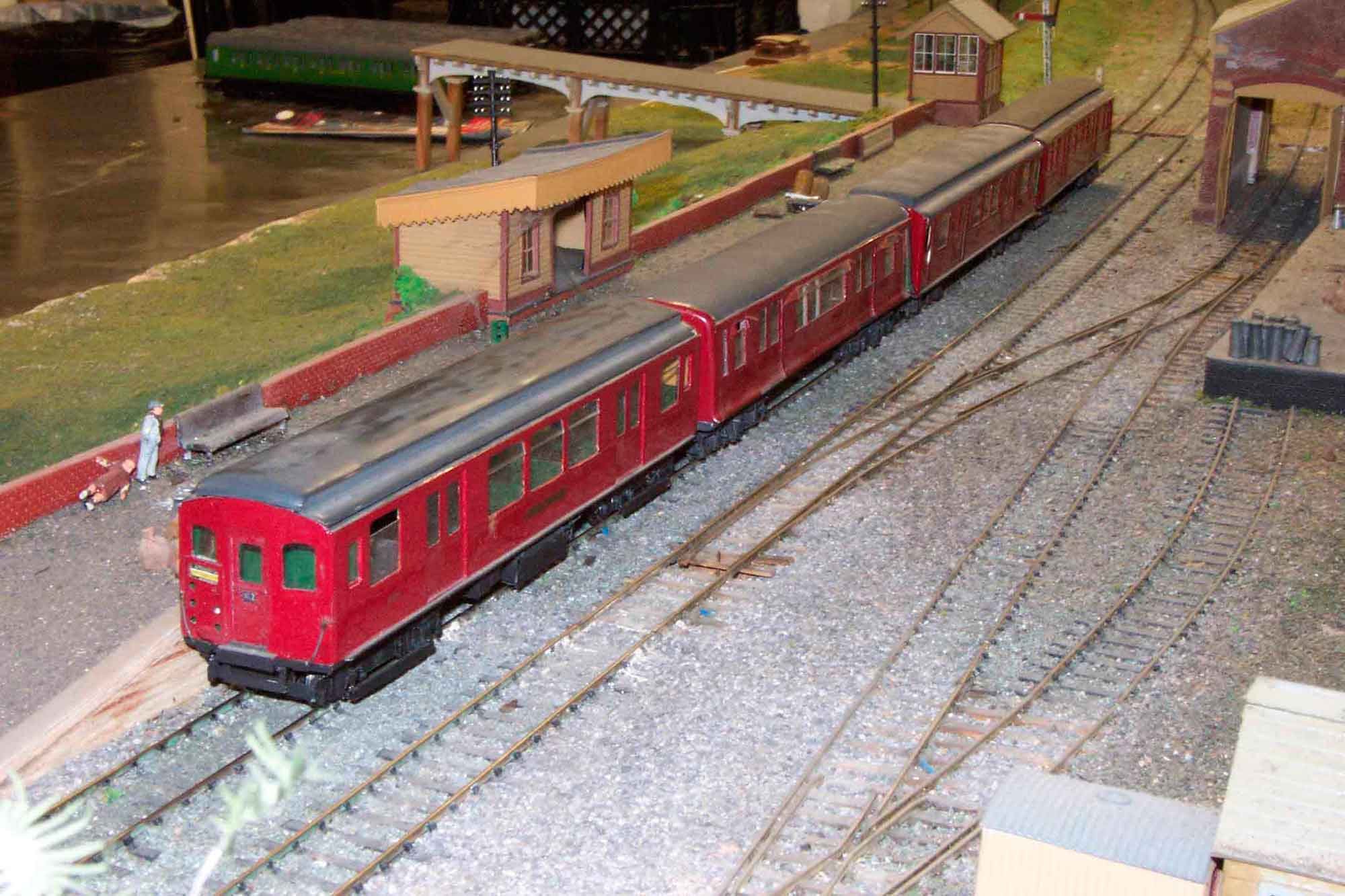LONGER THAN 40 MINUTES UNDERGROUND!
In the early sixties I made a journey by train to visit my uncle in Barnhurst.
I had to change trains at new cross, so this brought me up on a platform where there was a train of Q stock waiting in the south London line bay. To see Q stock at close quarters!
So I made subsequent trips to New Cross, not to see my uncle, but the wonders of underground trains. I bought a ticket to Whitechapel and somehow extended the journey to Mansion House to examine R stock in all its majesty. Silver white and red versions.
Then I cottoned on to the idea of buying a “Twin Rover” ticket which would afford me unlimited access to all the wonders of the underground system. (And buses both red and green)
The twin rover was bought at Bromley bus garage, in a little booking office next to the staff mess, straight out of “On The Buses”
A bus journey on a no. 47 RTL bus through Bromley, Downham, Lewisham, and on to the delights of Surrey Docks when still a Surrey commercial docks. I got off the bus, under a large suspended London transport bullseye appearing from a nondescript row of shops, the first signs of the UndergrounD. Then, on close inspection, a narrow opening revealed the entrance to Surrey Docks station.
Along a long passageway and down to the partially underground station, where a red train of Q-converted stock arrives. Brake rods squeal, doors open, the rhythmic Westinghouse pump, and the uneven click, click, clunk of the doors all closing separately. In the train, the click click click of the contactors as we accelerate away in the direction of Rotherhithe and the Thames tunnel.
If you got out at Wapping you could sample the delights of the damp dripping retaining walls, narrow platforms and the distant clanking and “mind the doors” of the station lift, still manually operated by an attendant.
On to Whitechapel, where we change for the District mainline, and red and silver R stock, a lot of it was still red back then. The curious whining noise of these trains and the multitude of motors, every bogie of the train possessed them.
If you were lucky, a Q stock train would come along, but increasingly rarely during the day, and only in the rush hour, and certainly never on Sundays.
You would have to venture down to the east London line to see Q stock, a wonderful mixture of rolling stock styles from the sleek 1938 stock back to the angular Q23 ex G stock cars, which soldiered on long after they were due for withdrawal, because they were all west facing and it would have been too expensive to turn the more recent cars to face west.
Out would come my mother’s tape measure, and I would then be seen by intrigued passengers crawling all over the interior of the car taking measurements.
Once, I was thwarted in my attempts at surveying rolling stock…on the northern city line an angry driver took exception to my measuring up his cab front.
The northern city line between Moorgate and Drayton Park was a true tube line, but with extra-large 16ft diameter tunnels (a relic of its origin as a proposed extension of the Great Northern railway from Finsbury Park to the city) It was the last repository of the pre-1938 tube stock, which would growl as if reluctant to leave, from the brakes as it left Moorgate station. If you sat behind the spacious switch compartment you could hear the click of the contactors as the train accelerated away. On Moorgate’s disused platform, the large diameter tube tunnel that just went a short distance (the aborted extension to Lothbury) and had its own unpleasant aroma .The long platforms and short 4-car trains. The stations on this line were unpopulated and eerily quiet, and you could hear the train’s progress along the tunnel for a long time after it left the station.
By this time, the line ended at Drayton Park, out in the open, which seemed to be in the middle of nowhere. If you ventured to the end of the platform you could just get a glimpse of the car sheds.
Preserved Q23 Stock at The London Transport Museum Covent Garden, and at “The Depot” museum at Acton Town.
Preserved Q35 Stock
The preserved Q35 car owned by the
London Underground Railway Society,
at the Ashford Steam Centre in the early 70s
The same Q35 car now housed
at The Depot Museum at Acton
Preserved Q38 Stock
Q27, Unfortunately there is no preserved Q27 stock,
A Rake of Q stock stabled at Whitechapel High Level Station
about 1965, photographed by me with my
stepdad’s Vestpocket Kodak camera.
The Interior of a Q27 car at New Cross Station
in the East London Railway Bay.
Photographed by me about 1965,
with the same camera
Sketches done by me as a 14 year old schoolboy n 1965, of the actual Q stock when still running
A recent sketch by me from General arrangement drawings when I was trying to work out the arrangement of seating inside the cars
My models of Q stock 4mm/1ft scale 00 gauge
The stock being refurbished,
the roof of the Q27 car being rebuilt etc.
The underground train was entirely scratch built (except for the Wheels, if I had a lathe, I would have scratch built them as well.) The first car to be constructed was the Q23 car, in 1967, when I was a tender 16 year old!The sides were constructed from “Plasticard” and laminated onto 1/16" Perspex. I recently augmented the train with another 3 cars. These were constructed in slightly different ways.
The Q27 car was built next. This was made from laminations of Plasticard (Plastic Styrene sheet) for the sides and ends, with acetate glazing material. The clerestory roof was made from carved balsawood, the floor was cardboard. The bogies were made from card-reinforced scaled-down resin-coated photographic prints of the actual drawings of the bogies,with added spring bolster and other detail. They have brass wheel bearings and “Romford“ wheelsets.
The Q35 car was built next. This employed a slightly different technique. A photographic print was made of a drawing of the sides of the car. The windows and door openings were then cut out of the photographic print. It was then reinforced at the back with thick card, leaving a small rebate around the door and window openings. The doors were made from a similar reduced print of the drawing, and inserted into the openings. The sides were then painted inside and out and glazed. The floor was made of thick card, the clerestory roof of carved balsa wood in two sections, one for the main part of the roof, and another for the clerestory.
The Q38 car was a little bit more difficult to make as it represented the streamlined flared side stock. Again, a reduced photo of the car sides was produced, and the window and door openings cut out, with cardboard reinforcement behind, but the sides weren’t flat. They changed direction at waist level, and had a flare out at stepboard level. The bend in the sides was easy enough to produce, but the flare presented a problem. I represented this by putting a fillet of milliput along the bottom of the side, and when it was set, slowly and laboriously sanding it down to shape so that it represented a smooth curve outwards. Again, the floor was made of thick card and the roof was an old “Hamblings” roof section built up to the correct profile. The bogies, as before, were entirely scratch-built of cardboard, and I have never had such a tedious time of it as when I was adding all the springing and bolster detail to them. Look at the real thing under Q, O, P, R, stock and you will see what I mean!
Elevations of G, Q23 and K, Q27 stock,
showing bogie and underframe detail




























